A glimpse into routing and engraving: 2013
The routing and engraving industry is as diversified and dynamic as most sign making companies today. Software innovations, hardware updates and health and safety improvements have transformed this sector in recent years. Jemima Codrington explores how the industry is undergoing a transformation to keep pace with today’s client demand.
The possibilities for cutting and routing technology has developed and expanded in recent years, opening new doors to sign makers. Rebecca Freemantle, ArtCAM Marketing Manager, says the software available is of particular importance.
“It is now more accessible for a company of any size to offer their customers an array of signage, such as affordable V-carved and three dimensional signs. This is thanks to the market not only seeing a greater influx of lower end laser and CNC machines but also the software to create the signs ready for manufacture,” says Rebecca.
Delcam’s line of software offers three products, that start with entry-level 2D design and 3D machining right through to advanced offerings for the creation of 2D, 2½ D and 3D signage. The ArtCAM product line has been developed for over fifteen years, and provides sign makers with continuous support and training via online tutorials, forums and onsite training courses. “We can even send people to your premises,” says Rebecca. “However you like to learn, we have support in place.”
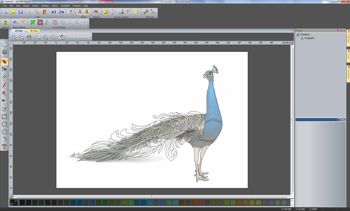
The products in the software range start from £99 with ArtCAM Express, which has been designed with hobbyists and small sign shops in mind. With this, the sign maker can either import existing bitmap images or vector artwork, and then create or alter their 2D artwork directly in the software. “In addition to creating 2D / 2.5D designs you can create 3D signs as well by importing 3D models into the software. What’s more, all of our products have over 600 pieces of free clipart, so you have a number of options when it comes to design,” says Rebecca. They can then set the tool path to send it to the CNC router or laser machine.
Delcam’s mid-range product features a number of additional 2D/ 3D design and machining strategies. “For more complex 3D signs, sign-makers can use ArtCAM Insignia, an introductory 3D modelling and machining package, which lets them quickly convert vector drawings or bitmap images into 3D relief artwork with a click of a button,” says Rebecca.
ArtCAM Insignia allows sign makers to take an image into the software, create the vectors around it (manually or using the built-in tool), and then convert it using the Shape Editor. By double clicking on an area of artwork, it will bring up the Shape Editor, and you can choose the shape you want to add to it. “Whether it’s a flat surface, dome or triangle, you can determine the shape and height you want, as well as determining how it interacts with the shapes you’ve created,” Rebecca explains.
The ArtCAM Pro has even more 3D modelling options and machining strategies to get an exceptionally high level of detail. Designers can add textures, use an array of sculpting tools and even use different analysis tools to examine their designs. As with all of the products in the line, simulation is available, so sign makers can see how the finished product will look once it’s machined. “The ArtCAM range works with both CNC routers and lasers, so if you did want to do laser engraving as well as other signage, ArtCAM offers that diversity!”
Making a choice
If the European Sign Expo in June showed anything, it was that the industry is evolving and diversifying – and at a rapid pace.
“What I’m noticing in the sign industry at the moment is that everyone’s looking to expand their portfolio in terms of the types of signs that they can provide. “Some are going down the digital route, some are doing very simple laser signs, some are heading in the direction of 3D signs and then you’ve got those that do LED,” says Rebecca. For this reason, it’s more important than ever to invest in software and machinery that can handle not only the work the sign maker is currently doing, but would be able to handle work in other sectors in the future. Investing in machinery that can switch up functionality and performance on various materials is important to avoid costly investments in hardware and software that doesn’t fit with the company’s long term business plan and vision.
Questions sign makers should ask themselves when choosing software:
- Is the software easy to learn?
- Does it offer CAD and CAM?
- Can I upgrade, or would I need to reinvest and relearn?
- What routers does it support?
- Does the company offer training and support?
- Do they know the industry?
Questions sign makers should ask themselves when choosing CNC vs Laser: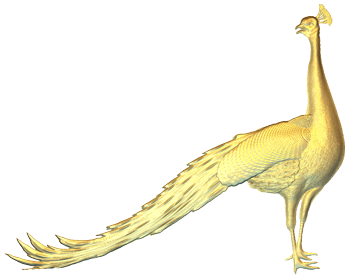
- Am I looking at doing just very basic 2D signs, or more complex jobs?
- Which materials will I be using primarily?
- Will it work with my current software?
- How much can I invest financially?
- What do I want to achieve in the short term, and the long term?
“Answering that last question in particular honestly is important for sign makers, so they can invest in a machine they can then progress with,” says Rebecca.
When it comes to choosing between a CNC router or a laser, Rebecca says the choice is dependent on several things. “You can create fantastic pieces from both laser & CNC machines but it depends on: what you’re looking to do, the knowledge of the operator, the material being machined… a number of factors really.” Another key thing to consider is diversification. If sign makers want to move from working on traditional signage to other areas such as POP displays or LEDs, having technology that can adjust to handle these projects is important to avoid costly re-investment in newer software, machinery and subsequent training.
Andy Borrow, Managing Director of Impact Sign Solutions, says there have been noticeable improvements to the hardware available to sign makers over the past few years.
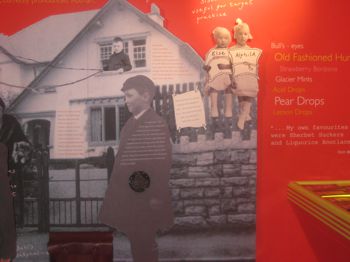
In the vain of “you get what you pay for,” one thing Andy prefers not to skimp on is ceramic barriers, which according to him make significant difference. “They are expensive and add a great deal to the time of the job, however they do enable you to do jobs that would otherwise be impossible. Fibre lasers do not, in my opinion, mark metals such as stainless steel ‘black’ enough.”
While an increasing number of customers are interested in 3D signage, before any company can carve out a 3D sign, they must first carve out a name for themselves for offering this to clients. “It’s great to be able to be creative and ‘play’ to create eye-catching signs in 3D, but these enquiries are few and far between for us, I think that you really have to be known for this type of work,” says Andy. Impact Sign Solutions uses EngraveLab software for all their engraving solutions. “It suits all of our needs,” says Andy. The software allows them to work on a number of projects – even the more peculiar wishes. “Requests range from bog standard data plates to the bizarre. We once had a request for a life-size acrylic cut-out in the shape of Roald Dahl when he was a boy, with a cut out so that you can feel his appendix as he had it removed!” Although the development of laser technology has had an effect on the market as a whole, for Andy, the workload remains largely unchanged - even with the odd Roald Dahl request! www.impactsignsolutions.co.uk
Liam Hodson, AXYZ International, explains sign makers are looking for adaptability from CNC routers.
“An increasing number of sign makers are looking to have more versatility out of machines, which is something we’ve seen develop over the past two to three years,” he explains. “They’re not just looking for a router, they’re looking for something to reduce labour costs that has the capability for things like knife cutting and print finishing.”
He adds that machines with a double head capacity are also in demand, as they effectively reduce labour costs and save time by allowing one operator to control two machines. “One important factor for sign makers to consider is the edge finish that customers are expecting from machines now. There’s been a lot of development from the machines controller and drive systems to perfect the edge finish on materials such as clear plastics.” 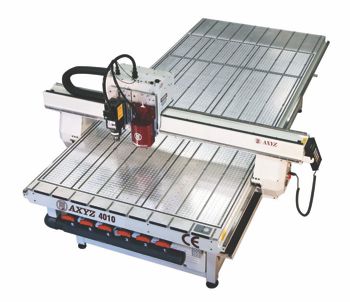
Regarding software, AXYZ International uses ArtCAM Express, and often recommends it as a starting point for most sign companies. “From there, we look at what the customer will be doing, and we then advise them on the best software for that specific purpose,” he says.
Regarding market demand, Liam has noticed a spike in requests for routers that have superior carving facilities, as customers are requesting more intricate jobs like V cut lettering signs. “We’re also seeing a lot of people move into the printing side. The user base we’re selling into already have a printer and just need a system to cut the print out and finish it. If something has been printed, the machine needs to know where the print is in relations to the material. With our system, the customer can put registration dots and the camera will go and find them and align the cut with the tool path with the artwork.”
Julian Sage, Managing Director of Complete CNC Solutions Ltd, has been selling Tekcel routers to the sign and display industry for the past fifteen years. He has noted the continuous improvements to the hardware, and the difference these make to the end-users productivity and cost management.
“Tekcel routers have recently been upgraded with our own in-house state of the art controller system, fitted as standard on all new models to give the operator a simple, feature-rich yet easy to use front end interface control,” he says. “All the complex and challenging number crunching is all kept behind the scenes.”
He adds that all routers benefit from encoded digital servo driven ballscrew drive technology, as opposed to rack & pinion drives on other systems that are cheaper and less accurate. “Ballscrew with digital servo drives are a must for any serious production router,” he affirms. The format offers exception positional and cutting accuracy at speed, alongside longevity and low maintenance.
“Cut to Print” camera systems have also been apparent improvements. These systems allow registering printed substrate profiling and excellent knife cutting capabilities. “This has moved routers along quite nicely over the last 3 years or so,” says Julian.
One concern he points out is the safety of the machines. As health and safety becomes a more prominent aspect of the industry, manufacturers should pay careful attention to creating machines that are designed with the safety of the operator in mind. “I’ve seen many machines out there that are certainly not fit for purpose and I’m shocked as to how they can actually be sold,” he says. The manufacturer of Tekcel routers has always developed products that operate quickly, accurately and safely, adding things like safety light beams and integrated controller safety loop features. 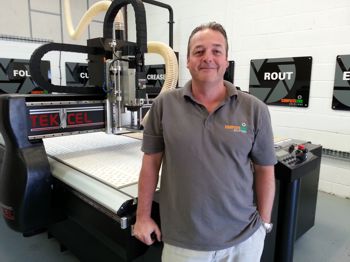
In terms of market demand, Julian notes the demand for Tekcel CNC routers is better than ever. As an increasing number of clients are requesting larger format systems, the Tekcel EXR 2m x 3m is proving to be a popular choice with sign makers. “With material manufacturers producing larger sheet products in sizes of up to 2m x 4m, especially in the ACM (Aluminium Composite Material) arena, then our demand for 2m x 4m routers has increased significantly,” he adds.
But as good as the hardware available is, software plays an increasingly important role for clients, end users/operators and machine suppliers. The improvements in recent releases, especially from software products developed by newer companies, have had a huge impact on efficiency. Julian notes that the key to successful software is the combination of ease of use with extensive capabilities and features. “From a machine suppliers point of view, then offering an expensive and complex set of software with your machine can be off-putting for the customer and also make your machine look complicated to operate, which again, can be daunting and disappointing for a new prospect,” he explains. Complete CNC Solutions uses Vectric VCarve Pro or Vectric Aspire as their first choice of software on account of it’s attractive price point, extensive features and easiness to learn and operate. “It’s feature rich, and also complements our machines,” he concludes.
